History - The Palaeolithic
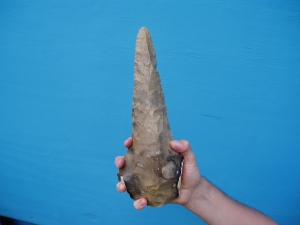
Pointed handaxe [Photo Francis Wenban-Smith]
The Palaeolithic - or Old Stone Age - is the earliest archaeological period. It covers the time from the initial colonisation of Britain 700,000 years ago to the end of the last Ice Age 10,000 years ago.
The main evidence from this period is stone tools. For the first half of the Palaeolithic, the so-called Lower Palaeolithic, the dominant tool-type was the handaxe.
These were made in various shapes and sizes. As the name suggests, handaxes were hand-held tools - there is no evidence of hafting (mounting on a wooden handle).
Handaxes were used for jointing and cutting meat off dead animals. Numerous ovate handaxes have been found at the 500,000 year old site of Boxgrove in West Sussex.
Beside these are bones of rhinoceros, deer and horse with cut-marks from their butchery. This indicates the importance of meat in the early hominid diet. There is no evidence of fire however - the meat was eaten raw!
Animals were either found dead, and scavenged, or hunted and killed with wooden spears. One of the horse bones from Boxgrove has an impact fracture from a heavy wooden spear tip. And remains of wooden spears have been found at other early sites in Britain and Germany.
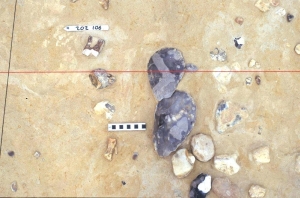
Land surface with rhino tooth and handaxes at Boxgrove [Photo Francis Wenban-Smith]

Ovate handaxe [Photo Francis Wenban-Smith]
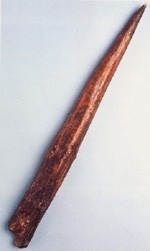
Wooden spear tip from Clacton-on-Sea [Photo NHM]
The earliest humans in Britain were a different species to ourselves - Homo heidelbergensis - of similar size and with a similar upright posture but a smaller brain.
A leg bone and two teeth of this early hominid have been found at Boxgrove, and the back part of a skull at the Kent site at Swanscombe.
Other more complete skulls of the same species have been found at other European sites - Petralona (Greece), Steinheim (Germany) and Arago Cave (France).
By 150,000 years ago these had evolved into Neanderthals, who died out in the middle of the last Ice Age 30,000 years ago, when modern humans first appear.
Different types of stone tool are associated with Neanderthals, with an emphasis on flake tools and specialised Levalloisian techniques of flake production.
Curiously, sites of this later part of the Palaeolithic are much rarer in England than earlier ones. England was now cut off from the continent by the channel, which made it harder for populations to enter the region.
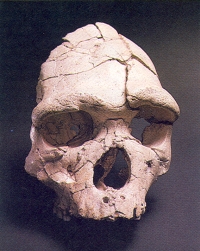
Skull from Arago Cave, Tautavel, France [Photo John Gowlett]
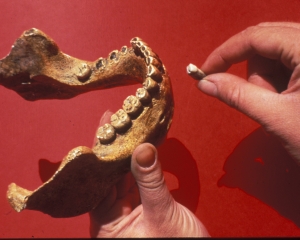
Boxgrove tooth and Heidelberg jaw [Photo Boxgrove Project]
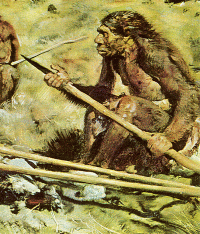
A Palaeolithic scene [Time-Life Books/NHM]
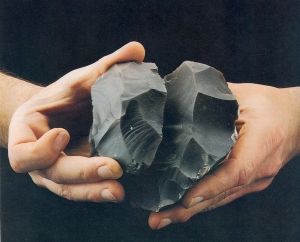
Levalloisian core and flake [Photo John Gowlett]
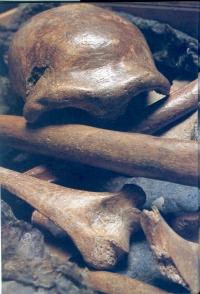
Neanderthal bones [Photo John Reader]